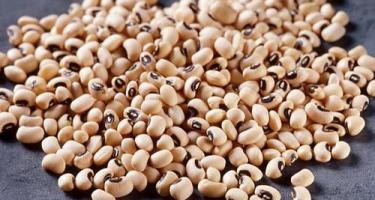Lobia - WDRA
Lobia
Commodity Code - 92
Commodity Name - Lobia / Cowpea (Karamani)
Commodity Scientific Name - Vigna sinensis

SC-I, BIDHAN SADABAHAR BCCP-3, C-475, C-519
| Grades | AP I | AP II | AP III | AP IV | AP V | |
| Moisture | Foreign matter | Other edible grains | Damamged grains | Weevilled grains | ||
| organic | inorganic | |||||
| Special | 10 | 0.1 | nil | nil | 2 | 2 |
| Standard | 12 | 0.1 | 0.5 | 2 | 4 | 6 |
| General | 14 | 0.75 | 0.25 | 6 | 5 | 10 |
General Characteristics:-
-
Be the dried and mature seeds of Vigna sinensis
-
Be sweet, clean, wholesome, uniform in size, shape, colour and in sound merchantable conditions
-
Be free from living and dead insects, fungus infestation, added colouring matter, moulds, obnoxious smell, discolouration
-
Be free from rodent hair and excreta
-
Be free from toxic or noxious seeds viz. Crotolaria (Crotolaria spp.), Corn cockle (Agrostemma githago L.), Castor bean (Ricinus communis L.), Jimson weed (Dhatura spp.), Argemone mexicana, Khesari and other seeds that are commonly recognized as harmful to health
-
Uric acid and Aflatoxin shall not exceed 100 milligrams and 30 micrograms per kilogram respectively
-
Comply with the restrictions in regard to poisonous metals (rule-57), crop contaminants (rule 57-A), naturally occurring toxic substances (rule 57-B), use of insecticides (rule-65) and other provisions prescribed under the Prevention of Food Adulteration Rules, 1955, as amended from time to time (Note: Since PFA 1955 has been repealed by FSSA 2006, the para may be read as “It shall comply with restrictions in regard to Aflatoxins, Heavy Metals, Insecticide or Pesticide residue, naturally occurring toxic substances, Microbial load or other food safety requirements as specified in the Food Safety and Standards (Contaminants, Toxins and Residues) Regulations, 2011 and the Food Safety and Standards (Food Products Standards and Food Additives) Regulations, 2011 or any other Regulation notified under the Food Safety and Standards Act,2006 for domestic trade”).
Lobia shall be
-
Clean, wholesome, reasonably uniform in size, shape and colour characteristic to the variety.
-
Free from obnoxious smell and fungus infestation.
| S.no. | Tradable parameters | Range-1 | Range-2 | Range-3 |
| A | Essential | |||
| i | Moisture(% by wt) Max | 10.0 | 12.0 | 14.0 |
| ii | Foreign matter(% by wt) Max | 1.0 | 2.0 | 3.0 |
| iii | Admixture/Other edible grains(% by wt) Max | 2.0 | 3.0 | 4.0 |
| iv | Damaged/ immature & Shriveled grains(% by wt) Max | 4.0 | 5.0 | 7.0 |
| v | Weevilled Grains (% by count) Max | 3.0 | 6.0 | 10.0 |
| B | Optional (Industrial/Processors) | |||
| i | Uric Acid | Not more than 100mg/kg | ||
| ii | Aflatoxin | Not more than 30 microgram/kg | ||
| iii | Total of foreign matter, other edible grains and damaged grains | Not more than 12 percent by weight | ||
Sampling
-
5 % or minimum one container shall be randomly selected for sampling
-
250 gm whichever is applicable shall be drawn from each selected container and shall be mixed homogenously, called as primary sample.
-
250 gm shall be drawn from primary sample called as Laboratory sample
Definitions
-
Foreign matter includes husk, straws, weed seeds, other inedible grains, metallic pieces, sand, gravel, dirt, pebbles, stones, lumps of earth, clay, mud and animal filth etc.
-
Other Edible Grains means any edible grains (including oil seeds) other than the one which is under consideration
-
Damaged Grains means grains that are sprouted or internally damaged as a result of heat, microbe, moisture or weather and mechanical injury
-
Weevilled grains means grains that are partially or wholly bored by insects injurious to grains but does not include germ eaten grains and egg spotted grains.
-
Immature & Shriveled Grains means kernels or pieces of kernels that are not fully developed
-
Admixture means the presence of a variety of the same grain other than the variety in consideration
Optional parameters are voluntary and may be analyzed as per buyer-seller agreement.
Total Shelf Life - 12 Months
Initial Validity of e NWR - 6 Months
Extension of e NWR Validity - 3 Months
Number of Extensions - 2*3 Months
Weight Tolerance - Loss or gain equivalent to 70% of the decrease or increase in the moisture content during storage







